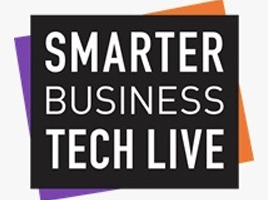Capitalizing on new digital business models and the growth opportunities they provide are forcing companies to re-evaluate ERP’s role. Made inflexible by years of customization, legacy ERP systems aren’t delivering what digital business models need today to scale and grow. Legacy ERP systems were purpose-built to excel at production consistency first at the expense of flexibility and responsiveness to customers’ changing requirements. By taking a business case-based approach to integrating Artificial Intelligence (AI) and machine learning into their platforms, Cloud ERP providers can fill the gap legacy ERP systems can’t.
Closing Legacy ERP Gaps With Greater Intelligence And Insight
Companies need to be able to respond quickly to unexpected, unfamiliar and unforeseen dilemmas with smart decisions fast for new digital business models to succeed. That’s not possible today with legacy ERP systems. Legacy IT technology stacks and the ERP systems they are built on aren’t designed to deliver the data needed most.
That’s all changing fast. A clear, compelling business model and successful execution of its related strategies are what all successful Cloud ERP implementations share. Cloud ERP platforms and apps provide organizations the flexibility they need to prioritize growth plans over IT constraints. And many have taken an Application Programming Interface (API) approach to integrate with legacy ERP systems to gain the incremental data these systems provide. In today’s era of Cloud ERP, rip-and-replace isn’t as commonplace as reorganizing entire IT architectures for greater speed, scale, and customer transparency using cloud-first platforms.
New business models thrive when an ERP system is constantly learning. That’s one of the greatest gaps between what Cloud ERP platforms’ potential and where their legacy counterparts are today. Cloud platforms provide greater integration options and more flexibility to customize applications and improve usability which is one of the biggest drawbacks of legacy ERP systems. Designed to deliver results by providing AI- and machine learning insights, Cloud ERP platforms, and apps can rejuvenate ERP systems and their contributions to business growth.

The following are the 10 ways to improve Cloud ERP with AI and machine learning, bridging the information gap with legacy ERP systems:
1- Cloud ERP platforms need to create and strengthen a self-learning knowledge system that orchestrates AI and machine learning from the shop floor to the top floor and across supplier networks.
Having a cloud-based infrastructure that integrates core ERP Web Services, apps, and real-time monitoring to deliver a steady stream of data to AI and machine learning algorithms accelerates how quickly the entire system learns. The Cloud ERP platform integration roadmap needs to include APIs and Web Services to connect with the many suppliers and buyer systems outside the walls of a manufacturer while integrating with legacy ERP systems to aggregate and analyze the decades of data they have generated.
2-Virtual agents have the potential to redefine many areas of manufacturing operations, from pick-by-voice systems to advanced diagnostics.
Apple’s Siri, Amazon’s Alexa, Google Voice, and Microsoft Cortana have the potential to be modified to streamline operations tasks and processes, bringing contextual guidance and direction to complex tasks. An example of one task virtual agents are being used for today is guiding production workers to select from the correct product bin as required by the Bill of Materials. Machinery manufacturers are piloting voice agents that can provide detailed work instructions that streamline configure-to-order and engineer-to-order production. Amazon has successfully partnered with automotive manufacturers and has the most design wins as of today. They could easily replicate this success with machinery manufacturers.
3-Design in the Internet of Things (IoT) support at the data structure level to realize quick wins as data collection pilots go live and scale.
Cloud ERP platforms have the potential to capitalize on the massive data stream IoT devices are generating today by designing in support at the data structure level first. Providing IoT-based data to AI and machine learning apps continually will bridge the intelligence gap many companies face today as they pursue new business models. Capgemini has provided an analysis of IoT use cases shown below, highlighting how production asset maintenance and asset tracking are quick wins waiting to happen. Cloud ERP platforms can accelerate them by designing in IoT support.
4-AI and machine learning can provide insights into how Overall Equipment Effectiveness (OEE) can be improved that aren’t apparent today.
Manufacturers will welcome the opportunity to have greater insights into how they can stabilize then normalize OEE performance across their shop floors. When a Cloud ERP platform serves as an always-learning knowledge system, real-time monitoring data from machinery and production assets provide much-needed insights into areas for improvement and what’s going well on the shop floor.
5-Designing machine learning algorithms into track-and-traceability to predict which lots from which suppliers are most likely to be of the highest or lowest quality.
Machine learning algorithms excel at finding patterns in diverse data sets by continually applying constraint-based algorithms. Suppliers vary widely in their quality and delivery schedule performance levels. Using machine learning, it’s possible to create a track-and-trace application that could indicate which lot from which supplier is the riskiest and those that are of exceptional quality as well.
6-Cloud ERP providers need to pay attention to how they can help close the configuration gap that exists between PLM, CAD, ERP and CRM systems by using AI and machine learning.
The most successful product configuration strategies rely on a single, lifecycle-based view of product configurations. They’re able to alleviate the conflicts between how engineering designs a product with CAD and PLM, how sales & marketing sell it with CRM, and how manufacturing builds it with an ERP system. AI and machine learning can enable configuration lifecycle management and avert lost time and sales, streamlining CPQ and product configuration strategies in the process.
7-Improving demand forecasting accuracy and enabling better collaboration with suppliers based on insights from machine learning-based predictive models is attainable with higher quality data.
By creating a self-learning knowledge system, Cloud ERP providers can vastly improve data latency rates that lead to higher forecast accuracy. Factoring in sales, marketing, and promotional programs further fine-tunes forecast accuracy.
8-Reducing equipment breakdowns and increasing asset utilization by analyzing machine-level data to determine when a given part needs to be replaced.
It’s possible to capture a steady stream of data on each machine’s health level using sensors equipped with an IP address. Cloud ERP providers have a great opportunity to capture machine-level data and use machine learning techniques to find patterns in production performance by using a production floor’s entire data set. This is especially important in process industries where machinery breakdowns lead to lost sales. Oil refineries are using machine learning models comprise more than 1,000 variables related to material input, output and process perimeters including weather conditions to estimate equipment failures.
9-Implementing self-learning algorithms that use production incident reports to predict production problems on assembly lines needs to happen in Cloud ERP platforms.
A local aircraft manufacturer is doing this today by using predictive modeling and machine learning to compare past incident reports. With legacy ERP systems these problems would have gone undetected and turned into production slowdowns or worse, the line having to stop.
10-Improving product quality by having machine learning algorithms aggregate, analyze and continually learn from supplier inspection, quality control, Return Material Authorization (RMA) and product failure data.
Cloud ERP platforms are in a unique position of being able to scale across the entire lifecycle of a product and capture quality data from the supplier to the customer. With legacy ERP systems manufacturers most often rely on an analysis of scrap materials by type or caused followed by RMAs. It’s time to get to the truth about why products fail, and machine learning can deliver the insights to get there.





